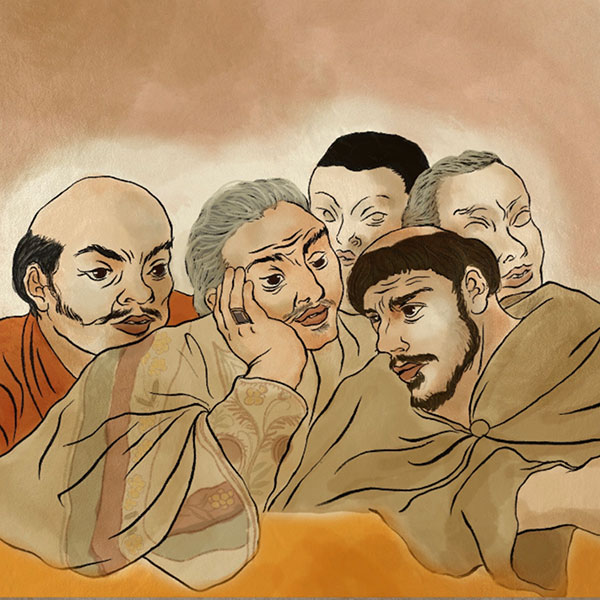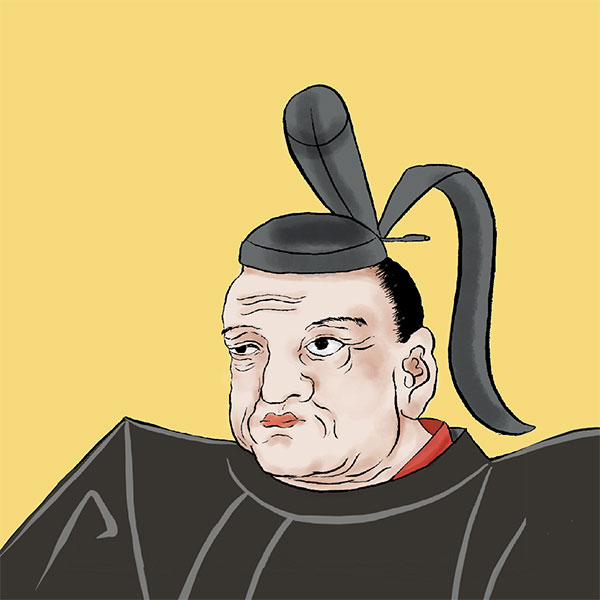- Sendai domainThe Date family continues to rule.
- The Sendai domain was a domain that had its headquarters at Sendai Castle and ruled over 620,000 koku of territory in present-day Miyagi Prefecture, southern Iwate Prefecture, Shinchi Town in Fukushima Prefecture, and enclaves in Ibaraki Prefecture and Shiga Prefecture. The Date family, whose founder was Date Masamune, served as the lord from the time the domain was established until the end of the Edo period.

Sendai CastleSendai, Miyagi Prefecture
- spring
- summer
- autumn
- winter
- TOP
- Tohoku
- Miyagi Prefecture
- Sendai Castle
| Other name | Aoba Castle, Gojoro |
|---|---|
| castle construction | 1601 |
| address | 1 Kawauchi, Aoba Ward, Sendai City, Miyagi Prefecture |
Sendai Castle is one of Japan's top 100 castles. You can see a panoramic view of Sendai city from the main enclosure ruins.
- Transportation access to Sendai Castle
- Approximately 22 minutes by bus from Sendai Station on the JR Tohoku Main Line or Tohoku Shinkansen.
HISTORYSendai Castle, a castle without a castle tower built by Date Masamune
Sendai Castle is a flat castle located in Sendai City, Miyagi Prefecture. The castle was built in the Edo period, so it had almost no stone walls and was surrounded by earthworks and a moat, and no castle tower was built from the beginning. It is also known as a castle that has suffered many fires. Let's unravel the history of Sendai Castle.
- A castle built after the Battle of Sekigahara
- Construction of Sendai Castle began in 1600, after the Battle of Sekigahara. The castle was built by Date Masamune, one of the most famous Sengoku warlords. Date Masamune used to live in Iwadeyama Castle, which was built in present-day Osaki City, Miyagi Prefecture, but with permission from Tokugawa Ieyasu, he began construction.
This is because Iwadeyama Castle was a castle unilaterally granted by Toyotomi Hideyoshi, and Tokugawa Ieyasu had given Date Masamune a ``1 million koku seal of approval,'' so he sought a castle in a location where it would be easier to conduct politics. This is thought to be the reason.
The 1,000,000 koku guarantee was later revoked due to suspicions that ``Date Masamune instigated the whole thing''.
Date Masamune built the Honmaru and Nishinomaru in 1602, and entered Sendai Castle in 1603. At this time, the castle tower was built, but the castle tower was not. In the era when Tokugawa Ieyasu had already ruled the country, castles without castle towers were outdated. However, the castle, which used the Hirose River as a line of defense, was strong and suitable for siege, and it is said that it alarmed Tokugawa Ieyasu. Then, in 1638, the second generation, Tadamune Date, expanded the Nishinomaru, and Sendai Castle was completed.
The Honmaru built by Date Masamune also had a palace and was used for conducting political affairs, but since it was located on top of a mountain and it was inconvenient to get around, the Ninomaru became the center of political affairs. Although the timing is unknown, Sannomaru was later built at the foot of Mt. Aoba where Sendai Castle's main enclosure was built, and the political affairs of the Sendai domain came to be completely conducted in Ninomaru and Sannomaru. - Sendai Castle in the Edo period
- During the Edo period, Sendai Castle was the domain office of the Sendai domain, and continued to be the residence of the Date family, which ruled the Sendai domain. Additionally, although Sendai Castle was frequently damaged by fires and earthquakes, it was repaired each time and continued to exist until the end of the Edo period. In particular, the fire that occurred in 1806 caused extensive damage, and Ninomaru was almost completely burnt down. It took six years to rebuild.
In addition, at the end of the Edo period, the Sendai domain joined the Ouetsu clan alliance and fought alongside the former Shogunate forces against the Meiji government forces. However, Sendai never became a battlefield, and Sendai Castle, which had the highest function as a fortress, entered the Meiji era without ever being used for war. - Sendai Castle after the Meiji era
- In 1873, the government issued an ordinance to abolish castles, and castles across the country began to be dismantled or reused as military facilities. Sendai Castle was considered to be ``existing,'' but prior to that, the Tohoku Chindai had been stationed there with Sendai Castle as their headquarters, and the main castle had been destroyed and the building materials used for military barracks.
After that, Emperor Meiji visited the shrine in 1876, but a fire broke out in the Ninomaru in 1876, and most of the buildings were destroyed. At this time, only a small portion of the Otemon Gate, Wakiyagura, and Toranomon Gate remained intact.
In 1931, Otemon and Wakiyagura were designated as national treasures. However, during the Sendai air raid in 1945, the Otemon Gate and Wakiyagura, which were designated as national treasures, were all burnt down.
After the war, the American military stationed in Sendai established "Camp Sendai" on the Ninomaru site, and Sannomaru Tatsumi Gate was demolished, and all the remains of the Edo period disappeared.
Camp Sendai was returned to Japan in 1957, and the Ninomaru site became Tohoku University's Kawauchi Campus, where it remains today. - Current site of Sendai Castle
- The current site of Sendai Castle is now known as Aobayama Park and is a tourist attraction. The site of Sendai Castle was the inspiration for the song ``Kojo no Tsuki'' composed by Rentaro Taki, so the melody of ``Kojo no Tsuki'' is regularly played in front of the bronze statue of the lyricist Doi Bansui.
There is also a museum displaying the ruins of the Honmaru site and excavated Sendai Castle relics, as well as a statue of Date Masamune, making it a popular ``sacred place'' for Date Masamune fans.
Although there are no remains of the Sendai Castle ruins, it is counted as one of Japan's 100 famous castles.
Read about incidents related to Sendai Castle
- Keicho Mission to EuropeDate Masamune's diplomatic corps, Spain and Rome
- The Edo period has a strong image of being isolated from the rest of the world, and that diplomatic relations with foreign countries went through the Tokugawa shogunate. However, in 1613 (Keicho 18th year; this time, the Western and Japanese calendars are written in reverse, as the focus is on overseas countries), a ban on Christianity was issued.

Read biographies related to Sendai Castle
- Date MasamuneThe essence of Oshu, burning with ambition to conquer the world
- During the Sengoku period, when many military commanders appeared and disappeared like bright stars, there was a military commander who stood out in Oshu. Date Masamune, who ran through the Sengoku period and the early Edo period, was a man who always had his sights set on conquering the world. A taste for showiness, which is the origin of the word date man

History of the Sendai Domain, whose domain office is Sendai Castle
| Domain office | Sendai Castle |
|---|---|
| old area | Miyagi District, Mutsu Province |
| stone height | 625,000 koku |
| Fudai/Tozama | Foreigner |
| main lord | Mr. Date |
| Estimated population | 699,334 people (Bunsei 11) |
The first lord of the domain was Date Masamune. He developed Sendai into Ou's largest castle town and worked hard to foster industry.












